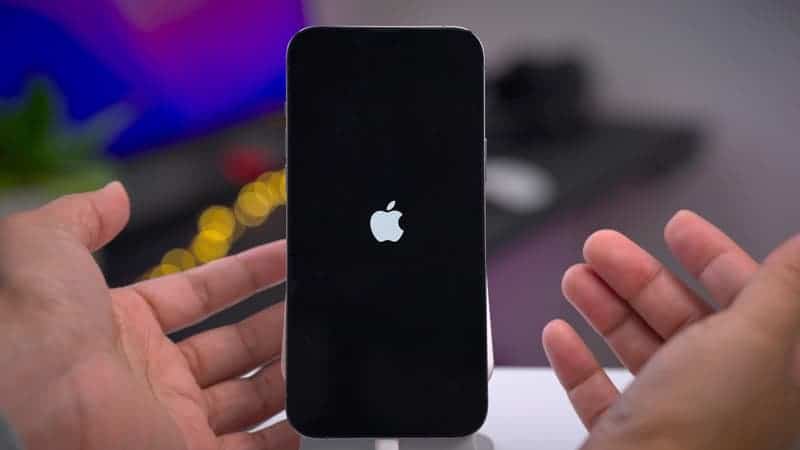Table of Contents
Fixing an unresponsive iPhone Touch screen
When an iPhone’s touch screen becomes unresponsive or is not functioning properly, it can lead to frustration and inconvenience. However, this is a common issue that can be effectively resolved through troubleshooting steps. This issue can cause headaches for the smartphone user.

While this is a devastating problem, it is important to explore the possible fix and we will guide you through on that. So in today’s article you will learn how to fix an unresponsive iPhone touchscreen. Let’s dig in.
Methods to fix iPhone touch screen not responding
1. Restart Your iPhone
When an iPhone’s touch screen becomes unresponsive, a straightforward solution often involves performing a simple restart. Allow me to guide you through the steps required to restart your iPhone:
- Press and hold the power button until the “Slide to power off” option appears.
- Slide the power off button from left to right to turn off your iPhone.
- After a few seconds, press and hold the power button again until the Apple logo appears.
- Release the power button and wait for your iPhone to restart.
Restarting your iPhone can effectively refresh the system, resolving any temporary glitches that might be hindering the responsiveness of the touch screen. This simple action helps to optimize performance and regain full functionality.
2. Clean Your Device Screen
To ensure the safety of your iPhone screen during cleaning, it is crucial to take necessary precautions and prevent any potential damage to your device.
- Before commencing with any cleaning tasks, it is important to power off your iPhone. This simple precaution will help avoid inadvertent taps or swipes that could potentially occur during the cleaning process.
- Take off any pouch, cases, or screen protectors to ensure a thorough cleaning.
- To keep your screen free from scratches or damage, it is recommended to use a microfiber cloth instead of abrasive materials or harsh chemicals. This gentle cleaning method ensures optimal care for your device screen.
- To clean your screen effectively, use a cleaning solution. If your screen is excessively soiled, lightly dampen a microfiber cloth with water or use a specialized screen-cleaning solution designed for electronic devices. Remember to avoid spraying liquid directly on the screen.
When cleaning your iPhone screen, it is important to remember the gentle approach. Applying excessive pressure can potentially harm the touch-sensitive layer, causing damage.
3. Update Your iPhone Software
If there is still a way you can navigate on the device, you should try performing an update of the OS. Follow the below steps to get it done
- Connect your iPhone to Wi-Fi or cellular data.
- Go to Settings.
- Scroll down and tap on “General”.
- Tap on “Software Update”.
- If an update is available, tap on “Download and Install”.
- Follow the on-screen instructions to complete the update.
Sometimes, updating your iPhone software can resolve issues with touch screen responsiveness. It is crucial to regularly update your device with the latest software releases in order to maintain optimal performance.
4. Calibrate Your iPhone Touch Screen
If the iPhone touch screen is responding but not responding properly, it can be helpful to calibrate the screen. This can resolve the issue. To calibrate your iPhone touch screen, follow the steps below:
- Unlock your iPhone and go to the Home screen.
- Open the “Settings” app.
- Scroll down and tap on “Accessibility”.
- Tap on “Touch”.
- Under the “Physical & Motor” section, tap on “Touch Accommodations”.
- Toggle on the “Touch Accommodations” switch.
- Tap on “Calibrate”.
- Follow the on-screen instructions to calibrate your iPhone touchscreen.
5. Check for Physical Damages
If the touch screen of an iPhone is unresponsive, it is crucial to examine for any physical damages that could be causing the problem. Inspect the screen for any cracks or scratches. Take a close look at your iPhone’s screen to identify visible damages that may impair the touch screen’s responsiveness.
6. Reset iPhone Settings
If your iPhone touch screen is unresponsive or not properly functioning, a possible solution to consider is resetting your iPhone settings. This action can effectively address any software-related issues that might be causing the problem. To perform this reset, follow these steps:
Steps to Reset All Settings:
- Open the Settings app on your iPhone.
- Scroll down and tap on “General”.
- Scroll to the bottom and tap on “Reset”.
- Tap on “Reset All Settings”.
- Enter your passcode if prompted.
- Confirm the reset by tapping on “Reset All Settings”.
Resetting all settings will not delete your data, but it will remove any personalized configurations, including Wi-Fi passwords and notification preferences. To avoid potential data loss, it is important to back up your iPhone before performing a reset.
By following these steps, one can effectively reset iPhone settings and potentially resolve any touch screen responsiveness issues being encountered.
7. Restore iPhone to Factory Settings
If all the previous methods have been exhausted and the iPhone touch screen remains unresponsive, one can attempt restoring the device to its factory settings. It is important to note that this action will result in the deletion of all data and settings on the iPhone, so it is crucial to backup any important information before proceeding. To restore your iPhone to its factory settings, follow these steps:
- Make sure you have the latest version of iTunes installed on your computer.
- Connect your iPhone to your computer using a USB cable.
- Open iTunes and select your iPhone.
- In the Summary tab, click on “Restore iPhone”.
- A popup window will appear asking if you want to backup your iPhone. Choose whether to backup your data or not. If you have already backed up your data, you can choose not to backup again.
- Click on “Restore” to confirm the restore process. iTunes will download the latest software for your iPhone and install it.
- Once the restore process is complete, your iPhone will restart and you can set it up as a new device or restore from a backup.
8. Contact Apple Support
If all the troubleshooting steps mentioned earlier have been attempted and your iPhone’s touch screen remains unresponsive, it is advisable to reach out to Apple Support for further assistance. Apple provides diverse options for contacting their support team.
When contacting Apple Support about any issues with your iPhone’s touch screen, it is essential to provide them with detailed information. This will enable their team to guide you through additional steps or determine if further inspection or repair for your device is needed.
Conclusion
Dealing with an unresponsive touch screen on the iPhone can cause frustration. However, there are several solutions available to resolve this issue. One option is to try simple troubleshooting steps like restarting the device. Additionally, more advanced methods such as updating the software or restoring the device can also be considered. It is important to remember to back up your data before attempting any repairs. If these steps fail to solve the problem, reaching out to Apple Support for further assistance is recommended.



